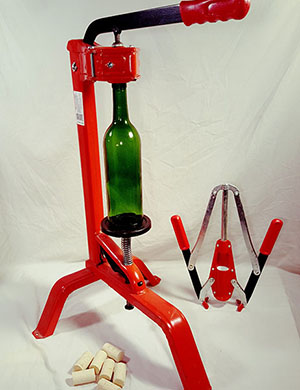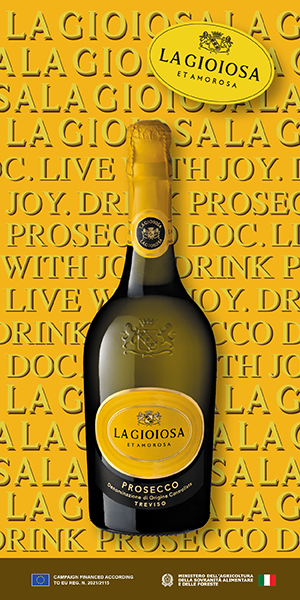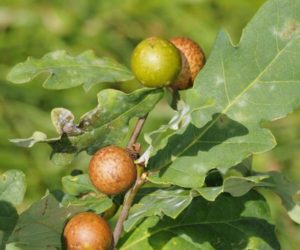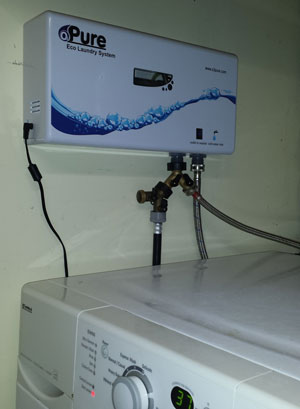Q
I have a Portuguese floor corker that has started to break off small pieces of cork that will end up in my bottled wine. This is an older model of the corker. I am wondering if there is a way to adjust the corker to stop the shredding of the cork, or am I doing something wrong in prepping the corks. I normally spray the corks with either vodka or sulfite solution to make sure they are sanitized.
Dale Ellis
Las Cruces, New Mexico

A
I hope I’m assuming correctly, but I’m imagining that you’ve got the smaller, lighter-weight red metal corker with adjustable spring-loaded bottle base and plastic jaws, sometimes called a “Portuguese” corker. These are decent corkers for a home winemaker with not much volume to bottle, but they can have their issues. Before I get into that, let’s talk about your corks.
Possible issues you may be having with the corks:
- Be sure your corks are fresh, and not old and dried out. Yes, corks are essentially plugs of dried-out tree bark but you don’t want them to be too dry. Be sure that they are new from a cork supplier (if you buy them in large quantities) and if purchased from a winemaking or brewing supply shop, that they are from a shop with enough turnover to keep fresh corks on hand. Ask the shop folks how long ago they opened the bag of corks — the cork companies typically sell them in sealed bags of 1,000 or 2,000 — and it’s important they sealed the bag up right away after opening it. If not, ask for corks from a fresh bag. New corks are important because they come from the manufacturer with the correct moisture content to ensure that, when they are compressed with your corker jaws, they re-expand correctly into the neck of the bottle. Corks that are old and dry are brittle and, as you intimate in your question, can break and chip off in ways that are not desired. Dry corks are a problem that be can be exacerbated by corker jaws that may be out of alignment.
- Make sure that you are using standard wine corks. The Portuguese-style corker is a one-trick pony. It only does the standard #8 or #9 cork (with some effort) well. Be sure you’re not trying to use larger corks. Spraying corks just prior to use with something like vodka or a sulfite solution can help provide a little lubrication to help you get the corks in and will provide some anti-microbial effects.
Possible issue with the corker:
- If your corks are perfect, are the right size, and you think you might be having issues with the corker, I always recommend getting in touch with the shop from which you bought it. Hopefully you’ll be able to find someone there with experience repairing and adjusting the corker and who can take an in-person look at what you think the problem might be. Since we’re doing this via long distance troubleshooting (hi there!) following are a couple of ideas on what might be wrong with your corker.
- You may need new jaws. The jaws — which, when the handle is pulled down, pinch together to squeeze the cork allowing it to be forced into your wine bottle — are made of plastic and just aren’t as strong as the brass jaws common in more expensive, durable corkers. Especially if you bought your corker used, it may be time for new corker jaws.
- Your jaws may need adjusting because one or more may be out of alignment and so may not be “pinching” the cork correctly. You should be able to get in there and re-set the jaws in case something has gotten in the way of them closing correctly, or of one being out of alignment. If you have the model I think you do, remove the two bolts on the sides of the corker head and lift off the top plate. As you remove the jaws, which are underneath, be sure to take note of the orientation of the jaws and the springs so you can put them back in the same position. Remove the old jaws, insert the new ones in the same manner and replace the top plates and bolts.
In general, I’m not a huge fan of the “Portuguese floor corker” because the jaws are plastic and the action is just single-lever. It doesn’t allow for much wiggle room when dealing with uneven or different-sized cork and bottle configurations. A step up is a corker with brass jaws, (sometimes called an “Italian” corker, sounds like an excuse for an EU soccer match!), which I find to be a little bit more forgiving and longer-lasting than a model with plastic jaws. The brass jaws are extremely sturdy and do a great job of compressing the corks. When you’re bottling a lot of wine, having an easy-to-use corker can really save time and make the job so much easier. I hope either a jaw adjustment or jaw replacement helps! When in doubt, please do contact your friendly neighborhood winemaking supply store or the shop from which you purchased your corker.
Q
My question regards micro-oxidation (and unfortunately, too much oxidation) in my small 8–10-gallon (30–38-L) barrels. I like the concentration of flavors that I get by aging my Bordeaux-style blends in my small barrels. I usually age in the barrels for 18–24 months. But lately, I’ve been getting too much of a nail polish smell, which I guess is acetaldehyde. Do you have any suggestions? I find that if I don’t age in barrels, my reds come out weak, without much body. I can’t use large barrels because of space considerations and weight. I try to top off regularly but I am sometimes lax. The main advantage of storing in the barrel for so long seems to be the concentration of flavors. My wines that have been evaporating and then topped off, seem to be “thicker,” which I like. Is there a way to get this effect, but with a shorter time in the barrel?
Lee
Via Live Chat
A
Unfortunately, with a small barrel like that, you’re going to have a high ratio of oxygen:wine. If you think about a traditional-sized barrel, it’s about 59 gallons (225 L); there’s a lot of wine in there. Especially if your barrel is much smaller, the surface area-to-wine ratio is much bigger for your mini-barrel than for a traditional barrel. Your 8–10 gallons (30–38 L) are therefore going to see a lot more wood contact, and a lot more oxygen transfer, than would 59 gallons (225 L) in a traditional, bigger barrel. This same principle is why some winemakers like to use bigger puncheons (like 132 gallons/500 L) so their wine gets proportionately less wood and oxygen exposure. This is popular in Rhône varieties like Grenache, Syrah, and Mourvèdre.
I suggest you not use your barrel for as long as you’re talking about — you’re getting way too much oxygen there and as a result, like you say, too much acetaldehyde. First off, be sure you’ve got at least 25–30 ppm free SO2 in your wine to help keep the aldehydes down. But 18–24 months in a barrel that small is way too long. Try aging your wine in the barrel (and make sure the barrel is clean, wood can be a source of spoilage organisms if not clean) for maybe 9 to 12 months instead, and then move to a keg or carboy with some oak chips or beans to keep the aging going to a point you like.
If the wine is so big and tannic you feel like you need to have it aging for that long, maybe try doing some fining trials (egg whites are cheap and easy to use) to knock down the tannins so you can get good mouthfeel and tannin resolution without having to have the wine so oxidatively stored for so long. You may find you can bottle earlier, which will really help protect your wine better in the long run, and will allow it to age more gracefully too. To get some concentration up front why not try a saignée at harvest? Bleed off 1⁄4 of your juice right after you crush, to concentrate the skins in the must. Take the juice and then make a rosé!
Q
I have a kit viognier that has finished fermenting but has a funky smell I can’t identify. (I wish we had a computer-based smell-o-vision!) It’s not vinegar, but it’s persistent. Closest description I have is the smell of grapes when they are green and still on the vine. The taste is fine, and the weird nose goes away in the glass, but I’m hesitant to bottle it. Any ideas? It’s been sitting in its carboy with a solid bung (topped up) for about 8 weeks after the last ferment, and it hasn’t dropped any real sediment since its last racking.
Megan M
via Live Chat
A
Viognier can be a bit of an odd duck. Like Riesling, it can get some of those weird petrol/gas like aromas, and that’s just natural, from the grapes. Like Sauvignon Blanc, it can also get reductive, especially when aged in closed-off situations like you describe. It’s possible it needs a racking or that it even might benefit from a small copper sulfate addition. Always do bench trials here. That’s not the answer if no improvement is noted.
You also might want to try fining to help your Viognier drop its turbidity and fall bright, which can often clean up aromas too. If you don’t mind using animal proteins, one that has some nice effects in white wines and can really freshen up aromas is Gelarom from Laffort. I know it’s so hard to do bench trials when you do such small-scale winemaking, but if you’ve got the tools to measure out teeny amounts of liquids like micropipettes (and I wish all winemakers would invest in these, as well as a gram scale that measures to the 0.01), you can do fining trials in as little as 50 mL wine.
You could always try to blend in another wine to give the aroma a lift. Good matches for Viognier are other Rhône varieties like Roussanne or Marsanne; even Chardonnay can sometimes work as well. You guys and gals know I always say “Never blend a loser” . . . but sometimes even 1% of something else can really make a big positive impact. Good luck!
Q
I’ve read a lot about malolactic fermentation (MLF) and think I know the basic principles. What I do not understand is the constant recommendation to test for the end of MLF with a relatively expensive chromatography kit.
Obviously, if one is going to bottle within a few months after starting MLF, you want to confirm the end of MLF to avoid exploding bottles later.
However, and this is my question: if you are going to age your wine in a carboy for many months before bottling, won’t it be certain that MLF will be over after sitting in a carboy after six or eight months, and there is no need for testing?
Robert Outenreath
San Rafael, California
A
You are absolutely right that most wines, especially those that are inoculated and have favorable conditions, will go malolactic (ML) complete within six or eight months of harvest. Even if your area gets cold and your ML bacteria have to take a bit of a “long winter’s nap,” it’s likely they’ll wake up when the weather gets warmer and will tick your fermentation down to completion. This is especially true for big reds that age even longer, like Cabernets and Merlots.
There are two problems with just inoculating and assuming that your ML fermentation will be fine: 1) It’s possible conditions aren’t favorable and your MLF will stick, and 2) You want to know when MLF is complete so you can rack and start adding SO2 right away in order to protect your wine. I’ll tackle the second point first. Basically, when wine is undergoing an active primary or secondary (MLF) fermentation, it’s protected by the carbon dioxide gas being released by the microbes. When the ML fermentation goes complete, however, your wine becomes extremely vulnerable to oxygen and spoilage microbes that love an air environment, especially acetobacter, which eat ethanol and transform it into acetic acid, or vinegar. Because of this, commercial winemakers typically test for ML completion every two weeks. The hope is that you “catch” the wine when it becomes vulnerable and hit it with SO2 in order to deter acetobacter from gaining a foothold in your wine.
ML bacteria also need some specific micronutrients that can be present in grapes and wine but that aren’t always . . .
With regards to the first reason, it’s a good idea to keep track of what’s going on with your ML fermentation because it’s quite possible that either the bacteria are from a bad batch or conditions in your wine are not favorable for completion. If you have a “stuck” or not-happening ML fermentation, as I mentioned before, your wine is hanging out in an extremely vulnerable state.
As many of my readers know, there’s a laundry list of conditions that need to be met for ML bacteria to be content. ML bacteria are happiest under higher pH, lower alcohol, and higher temperature conditions. In general, this means that your pH should be above 3.2–3.3, temperature should be above 55–60 °F (13–16 °C), and the alcohol can’t be over 15%. ML bacteria also need some specific micronutrients that can be present in grapes and wine but that aren’t always, especially if they got eaten up early on by the yeast or by other ambient microbes that may have come in on the grapes. For these reasons it’s important to know what’s happening in the mysterious dark depths of your carboy or barrel. You don’t have to go as crazy as commercial winemakers, but I do recommend checking your ML fermentation at least once a month, especially if it’s been over two or three months since you inoculated and if you believe all of the above conditions are met.






